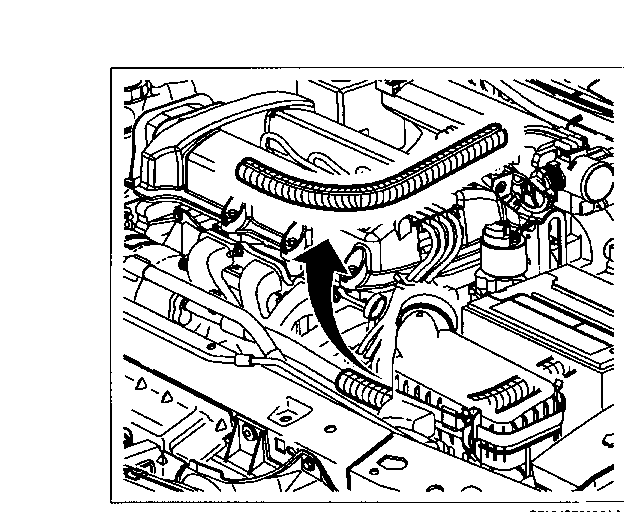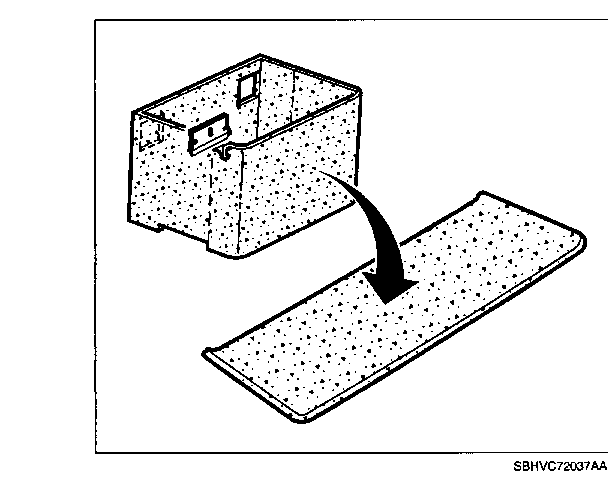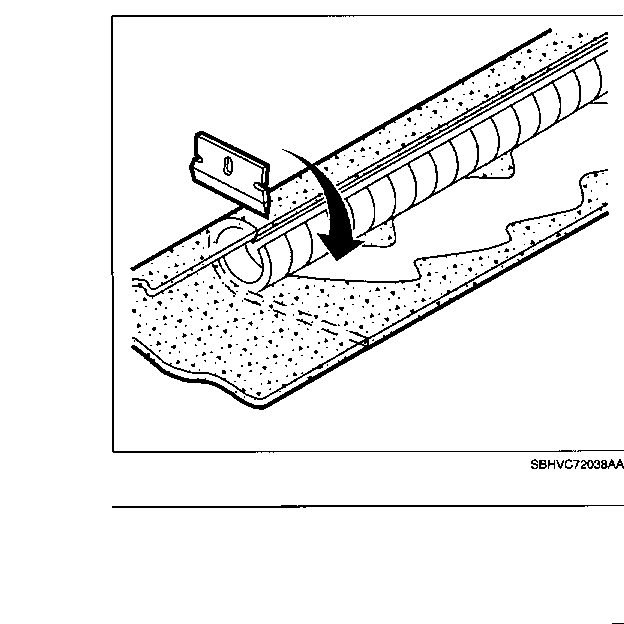RATTLE IN ENGINE COMPARTMENT AT IDLE

SUBJECT: Rattle in Engine Compartment at Idle (Install Foam Rubber to A/C ---------------------------------------------------------------- Hose Conduit) -------------
MODELS AFFECTED: 1996 Saturns built after and including VIN TZ238241, and -------------------------------------------------------- 1997 Saturns except for 1997 vehicles in the following VIN ------------------------------------------------------------ range, which have the foam rubber installed during ------------------------------------------------------------ production: VZ304167 through VZ314184 ------------------------------------
CONDITION: The A/C compressor suction hose may contact the transaxle cover and/or battery tray causing a rattle condition at idle.
CAUSE: The hard nylon conduit of the A/C compressor suction hose contacts adjacent components such as the transaxle cover and battery tray, and during certain conditions (most commonly at idle), an audible underhood noise in the engine compartment is heard. This noise is usually described as a rattle.
CAUSE: The hard nylon conduit of the A/C compressor suction hose contacts adjacent components such as the transaxle cover and battery tray, and during certain conditions (most commonly at idle), an audible underhood noise in the engine compartment is heard. This noise is usually described as a rattle.
CORRECTION: Remove A/C compressor suction hose conduit, install foam rubber to conduit, and re-install using the procedures in this bulletin.
PROCEDURES
1. Disconnect front air intake duct assembly at air filter assembly to improve access to A/C compressor suction hose.
2. Remove A/C compressor suction hose conduit from A/C compressor suction hose.
3. Wipe A/C compressor suction hose conduit with alcohol to remove any oil or dirt contamination.
4. Trim a 114.3 x 298.5 mm (4 1/2 x 11 3/4 in.) rectangle piece from a new battery heat shield assembly (P/N 21022567).
5. Apply a generous amount of Kent Industries Stick It Adhesive (P/N 10170) or equivalent to the back side of the foam piece cut from the battery heat shield assembly. (The back side of the foam is the the side opposite the smooth side.)
6. Apply a generous amount of Kent Industries Stick It Adhesive (P/N 10170) or equivalent to the A/C compressor suction hose conduit.
7. Allow enough time for the adhesive to flash, then install foam piece to A/C compressor suction hose conduit.
IMPORTANT: When installing the foam piece to the A/C compressor suction hose conduit, make sure to align the edge of the foam piece to the lengthwise opening in the A/C compressor suction hose conduit as shown in illustration.
8. Trim foam piece as required to fit the length of the A/C compressor suction hose.
9. Lubricate the A/C compressor suction hose with a mild liquid soap to help installation of the A/C compressor suction hose conduit.
NOTICE: Make sure the A/C compressor suction hose conduit does not contact transaxle electrical wires, or transaxle electrical wire could become damaged.
10. Install the A/C compressor suction hose conduit to the A/C compressor suction hose. Position the A/C compressor suction hose conduit just rearward of the transaxle wire connector. Make sure A/C suction hose conduit does not contact transaxle wires.
11. Reconnect front air intake duct assembly to air filter assembly.
PARTS REQUIREMENTS: 21022567 Shield Asm-Batt Ht
CLAIM INFORMATION: To receive credit for this repair during the warranty coverage period, submit a claim through the Saturn Dealer System as follows:
Labor Case Operation Type Description Code Time ---- -------------------------- --------- ------- VW Install Foam Rubber to A/C T9744 0.5 hrs Hose Conduit



General Motors bulletins are intended for use by professional technicians, not a "do-it-yourselfer". They are written to inform those technicians of conditions that may occur on some vehicles, or to provide information that could assist in the proper service of a vehicle. Properly trained technicians have the equipment, tools, safety instructions and know-how to do a job properly and safely. If a condition is described, do not assume that the bulletin applies to your vehicle, or that your vehicle will have that condition. See a General Motors dealer servicing your brand of General Motors vehicle for information on whether your vehicle may benefit from the information.
